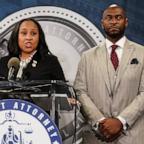Dental Care Has Decayed for Low Income Families
Millions of Americans can't afford dental insurance.
Sept. 17, 2012— -- Like millions of Americans, Miami resident Claribel Agramonte could not afford dental insurance, so she looked for an inexpensive dentist to fix her 14-year-old daughter's broken tooth. A friend recommended Humberto Francisco Perez, an 81-year old "backyard dentist" who said he could do the work on the cheap.
Police say Perez left the girl permanently disfigured.
They said Perez filed four of the girl's front teeth all the way down to the gums, then tried to replace them with an iron bar painted white. For weeks after the procedure, the child cried and complained of pain and sensitivity.
Finally, her mother took her to a professional dentist and filed a police report. In an undercover sting operation run by the Miami police department, Perez was arrested and charged with child abuse, child negligence, and providing dentistry services without a license.
The Agramonte case may be an extreme example of underground dentistry gone wrong, but Frank Catalanotto, the chair of the Department of Community Dentistry and Behavioral Science at the University of Florida, said it happens all too frequently in communities where dental insurance is as scarce as hen's teeth and people cannot afford the services of a licensed dentist.
"I've had pictures sent to me of similar cases where children and adults who couldn't pay for a traditional dentist received disastrous care by one of these backyard or garage dentists. It's inconceivable,' he said.
Good dental care is increasingly becoming an unaffordable luxury for many Americans. Last year, the Kaiser Family Foundation reported that 33 percent of people surveyed skipped dental care or dental checkups because they couldn't afford them. A 2003 report by the U.S. Surgeon General found that 108 million Americans had no dental insurance -- nearly 2.5 times the number for those who have no health insurance. And more than half of dental procedures are now paid for out of pocket.
As a result, many patients are now waiting until their dental problems are dire and their options become even more limited. Nancy Greenwalt, a dentist who runs several Smile Healthy dental clinics for low income patients in Illinois, said she's seeing an increasing number of patients who avoid the dentist for as long as possible, usually because they have no money to pay for services.
"A preventative checkup might cost a hundred dollars but once you find yourself in an emergency situation, it gets a lot more expensive than that -- and you may put your health at risk," she said.
Catalanotto said patients who don't wind up using an uncredentialed dentist or can't find a low-cost clinic often seek help at hospital emergency rooms, where they are given pain medication and antibiotics but rarely treatment. They're usually told to go find a dentist. When they don't, Catalanotto said, they wind up back in the emergency room.
In Florida alone, there are 115,000 hospital ER visits for dental problems each year, according to the latest Pew research report on dentistry in America. Pew says taxpayers foot the $88 million dollar bill for these visits.
Even when a patient seeks care from a licensed dentist, their oral health is often too far gone for simple preventative dentistry to deal with. Greenwalt said that her clinics she's seeing an increasing number of patients -- some of them children as young as three -- who have so many rotten teeth that she admits them to the hospital and operates under general anesthesia in order to treat them. Once again, the taxpayer often picks up the bill.
A more sensible, less costly approach, said Catalanotto, would be to "increase oral literacy" by better educating consumers on the basics of oral hygiene. That way they could take more responsibility for their dental health.
He also said there is pressing need for expanded access to high-quality low-cost services -- an idea that's backed up by statistics.
For example, the non-profit advocacy group Oral Health America says there should be one dentist for every 1,500 people. Currently there is one dentist per 2,000 Americans -- and they are unevenly clustered geographically. Oral Health America highlights one urban area in Washington state that has one dentist for every 950 people, while a neighboring rural county had one dentist per 12,300 people. And Pew reports that more than 28 million Americans have no reasonable expectation of finding a dentist in their community.
Catalanotto said that in order to avoid more tragedies like the Miami case, dentists will have to advocate that some of their work go to dental hygienists and other mid-level providers (analogous to physician's assistants) to deliver services to under-served and low-income communities. In most states, this is currently against the law.
Another solution may be to bring at least some of the illegal underground dental network into the fold. One of Catalanotto's University of Florida programs prepares foreign dentists to pass licensing exams so they can practice legally -- and safely.




